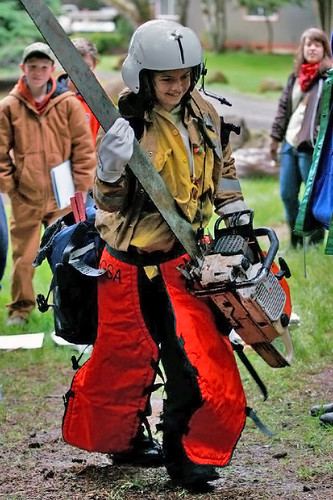It was chilly and wet when they arrived in western Oregon, but that didn’t dampen the excitement of the 165 sixth-grade students from six small schools who arrived via yellow buses, pick-up trucks, vans and even a horse trailer at this year’s Forest Camp Outdoor School near the small town of Lebanon.
They kicked off the first day with an all-camp meeting where students were introduced to staff, sang songs and learned camp rules. Campers met their counselors (one parent and one high school student) and moved into one of the 19 cabins. Then they spent the afternoon at challenge courses, cabin development classes and listening to encouraging stories to help gear them up for a successful week away from home.

The rest of the week was spent learning about aquatic ecology, wildland fire, watershed health, how trees grow and the best way to shoot a bow and arrow. Campers spent their time outside of class singing songs, hanging out with new friends and at special evening activities acting in skits, listening to stories from counselors and folk dancing.
The week culminated with Wilderness Night, where students and counselors built campfires and created their own shelters out of sheets of plastic and rope. The night brought a little rain but the consensus on Friday morning was that campers had a safe and great time.
Forest Camp started in 1992 at the Fall Creek Fish Hatchery when employees of the Alsea Ranger District of the Siuslaw National Forest felt that local kids could benefit from more exposure to natural resources. They worked with Oregon Department of Fish and Wildlife, Starker Forests and small local schools to formulate a plan that resulted in a successful week long residential camp. More than 3,500 kids have attended Forest Camp since its inception.
Partners providing instruction at camp include: Siuslaw National Forest, Oregon Department of Fish and Wildlife, Starker Forests, Benton County Soil and Water Conservation District, Eugene District Bureau of Land Management, Salem District Bureau of Land Management, Pacific Northwest Research Station and many independent volunteers.
